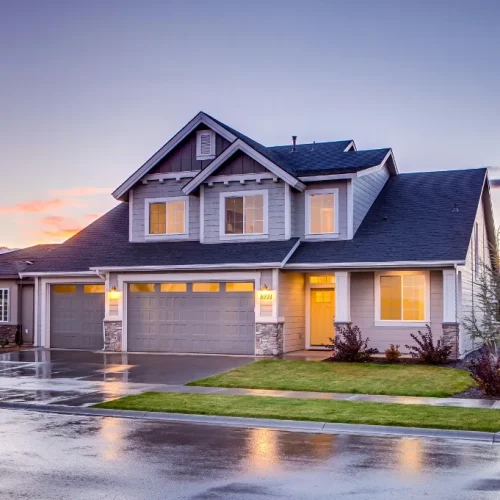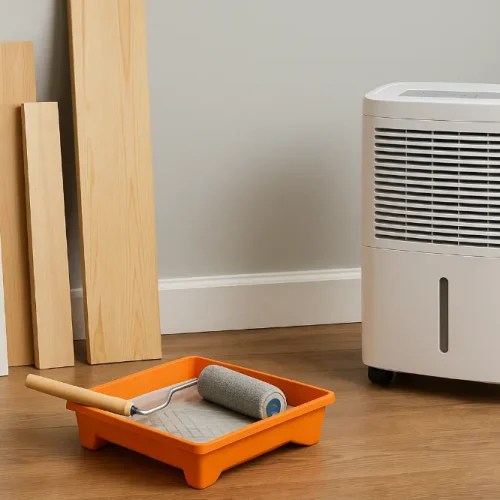
What’s the first thing people do when a big weather change is coming? They check the windows. Then the doors. Then maybe panic-buy a space heater or plug in a fan that hasn’t been used since last summer. But here’s the thing—by the time the forecast shifts, it’s often too late for fixes. You don’t want to be in troubleshooting mode when your building should already be holding steady.
In Sandersville, GA, this hits especially hard. Fall can last for three weeks. Winter might show up in the middle of December or not until January. And let’s not even talk about spring, where one day you’re freezing and the next it feels like June. In regions like this, with unpredictable swings in temperature, waiting to act until the weather demands it can push your building past its limit.
The structures we live and work in are designed to protect us from the outside world. But protection isn’t passive. It’s not just about walls and a roof. It’s about how a building responds—how it adjusts, how it holds temperature, and how its systems behave when the forecast changes without warning.
In this blog, we will share what your building really needs before those shifts hit, why preparation is more than a checklist, and how smart decisions now can prevent costly surprises later.
Where Comfort and Timing Meet
When we talk about building readiness, we often focus on things like insulation or window seals. These matter. But they’re not the first line of defense. That role belongs to your climate systems. And in most modern buildings, that means a central unit running quietly in the background—until it doesn’t.
Most people don’t think about those systems until something breaks. But here’s a better approach: treat those systems like a safety net that must always be ready to catch you. That means checking their condition before you actually need them.
If you’ve ever tried to book a technician the same week a cold snap rolls through, you already know the problem. You’re suddenly competing with everyone else who waited. And that’s assuming your unit can be repaired at all. Sometimes, it’s past that point. That’s where a reliable company that specializes in HVAC installation in Sandersville, GA, makes all the difference. They don’t just fix what’s broken. They help you think long-term—matching your space, budget, and usage habits with the system that keeps things running efficiently no matter the weather.
That kind of planning gives you more than temperature control. It gives you margin. A chance to respond before things fail. And in today’s climate, literal and economic, that margin is everything.
The Cost of Getting It Wrong
There’s a reason commercial buildings and managed properties often schedule seasonal inspections. It’s not just policy. It’s because failure in these systems doesn’t just mean discomfort—it means loss. Of productivity. Of inventory. Of trust.
Picture a retail shop in December where customers can see their breath indoors. Or an office building where employees keep jackets on through their meetings. Or a daycare center where temperature regulation becomes a safety issue, not just a convenience. These aren’t just hypotheticals. They’re real situations that businesses and building managers face when systems fall short.
The financial impact isn’t just repair costs. It’s downtime. Cancelled appointments. Poor reviews. Lost tenants. And perhaps most frustrating of all—it’s avoidable.
Buildings that perform well in changing weather don’t have stronger walls. They have better timing. They’ve made decisions in advance. Not perfect ones, just practical ones. A tune-up. A consultation. An upgrade when the signs first appeared, not after the failure.
Planning for Resilience, Not Just Efficiency
Everyone likes the idea of being efficient. But there’s a more important goal—being resilient. Efficiency is about using less. Resilience is about bouncing back quickly when something tries to knock you off balance. Ideally, your building should offer both.
Here’s where things get interesting. Resilience planning isn’t just for giant facilities or high-budget renovations. It’s for any building with people inside it. Whether you’re running a four-bedroom house, a corner café, or a small commercial property, you have something at stake when the weather turns.
That’s why more building owners are starting to shift how they invest. Instead of waiting until failure forces action, they’re prioritizing infrastructure now. A well-installed HVAC system doesn’t just work—it adapts. It keeps energy bills steady. It lets you sleep through storms. And it helps your building meet the moment before the moment demands it.
The Questions You Should Be Asking Now
If you’re unsure where to start, here are a few things to consider:
- Does your current system still match your building’s use and layout?
- How old is the unit—and has it had any recent repairs?
- Are certain rooms consistently harder to heat or cool?
- Is your energy bill spiking even when usage stays the same?
- Do you have a trusted technician or service provider who knows your building?
These aren’t abstract questions. They’re your early warning system. And answering them now—before temperatures swing—can save you days of discomfort, hundreds in emergency costs, and hours of waiting for a service slot that never opens up.
Performance Is a Choice, Not a Fluke
Some buildings feel better to be in. The temperature is just right. The air is quiet and clean. The transition from season to season doesn’t make you adjust your whole routine. That’s not luck. It’s a result of choices made ahead of time.
So if you’re looking ahead to cooler mornings or hotter afternoons, don’t wait for the weather to remind you what your building needs. Take the hint now. Find the weak spots. Strengthen what matters.
Because once the forecast turns, it’s already reacting time. And the buildings that hold steady? They’re the ones that made their move before the sky changed.
FAQs
4–6 weeks before typical first heat or cold spikes, so parts and labor are available.
Uneven rooms and emergency service waits during the first cold/hot week.
Yes—clean coils, correct refrigerant charge, and good airflow keep efficiency high and bills steady.
If repairs are frequent, comfort is inconsistent, or energy use rises with the same habits, evaluate replacement.
Matching system capacity to your space and ductwork to avoid short-cycling and weak zones.
If certain rooms are chronically off-target, zoning or balancing can solve it without oversizing.
Load calcs, duct assessment, sealing, commissioning, and documented performance readings.
Every 1–3 months, more often with pets, dust, or high usage.
Static pressure, delta-T, amperage, and control calibration to spot trends early.
Lead time secures parts, avoids peak-season queues, and prevents comfort and revenue loss.













